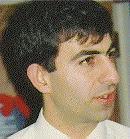
Dr. J on Running
Dr. J Flies an F-16
Friday 21 October 2011The adventure began with a three-segment first class flight from Syracuse to Burbank and a three-hour drive north to Edwards Air Force Base. My flight suit, jacket, gloves and boots awaited me in the closet of my DVQ. They fit me nicely. The boots felt heavy and stiff compared to my New Balance Minimus.
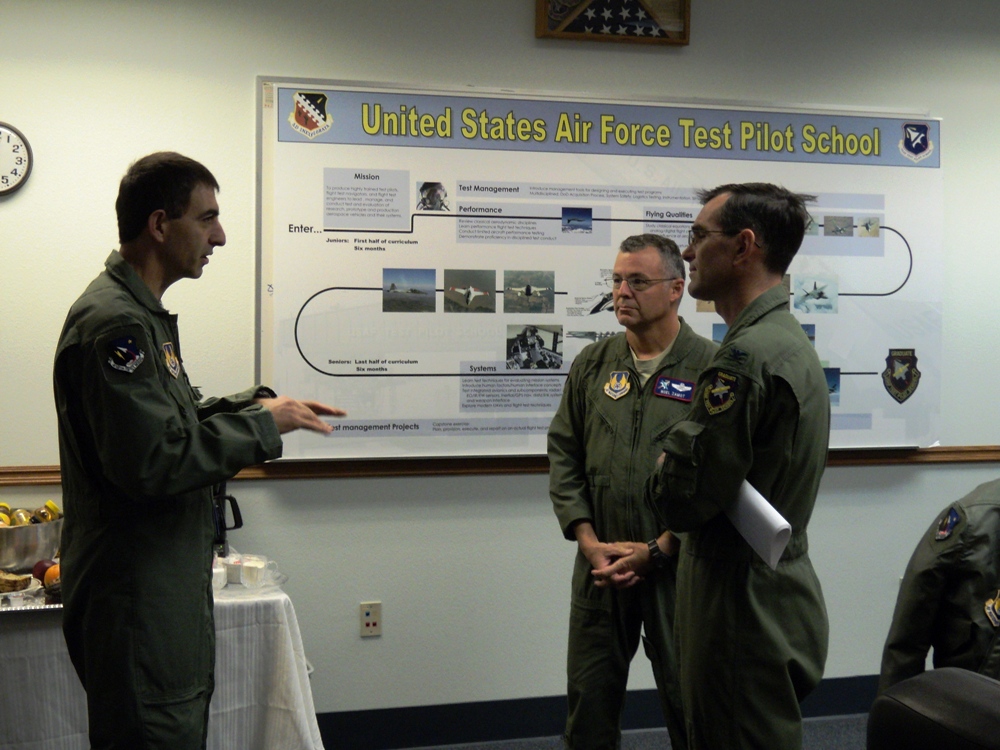 The room-service physiology brief provided a long list of what can go wrong on a high-performance flight. Hypoxia may lead to disorientation. G maneuvers that generate several times the pull of gravity may lead to loss of consciousness. Rapid decompression may lead to nitrogen poisoning. Gas trapping my explode teeth with leaky fillings. Ears, noses and sinuses may get congested.
The room-service physiology brief provided a long list of what can go wrong on a high-performance flight. Hypoxia may lead to disorientation. G maneuvers that generate several times the pull of gravity may lead to loss of consciousness. Rapid decompression may lead to nitrogen poisoning. Gas trapping my explode teeth with leaky fillings. Ears, noses and sinuses may get congested.
The pre-flight medical exam brought some anxiety. I weighed within the limits of the ejection seats. I measured within the height constraints of the cockpit. I demonstrated dexterity superior to Chuck Yeager who flew recently his sunset flight. At 137/90, my blood pressure measured too high for a habitual marathoner. Col Kathy the flight surgeon, a 3:37 marathoner and an Ironman, cleared me for the flight.
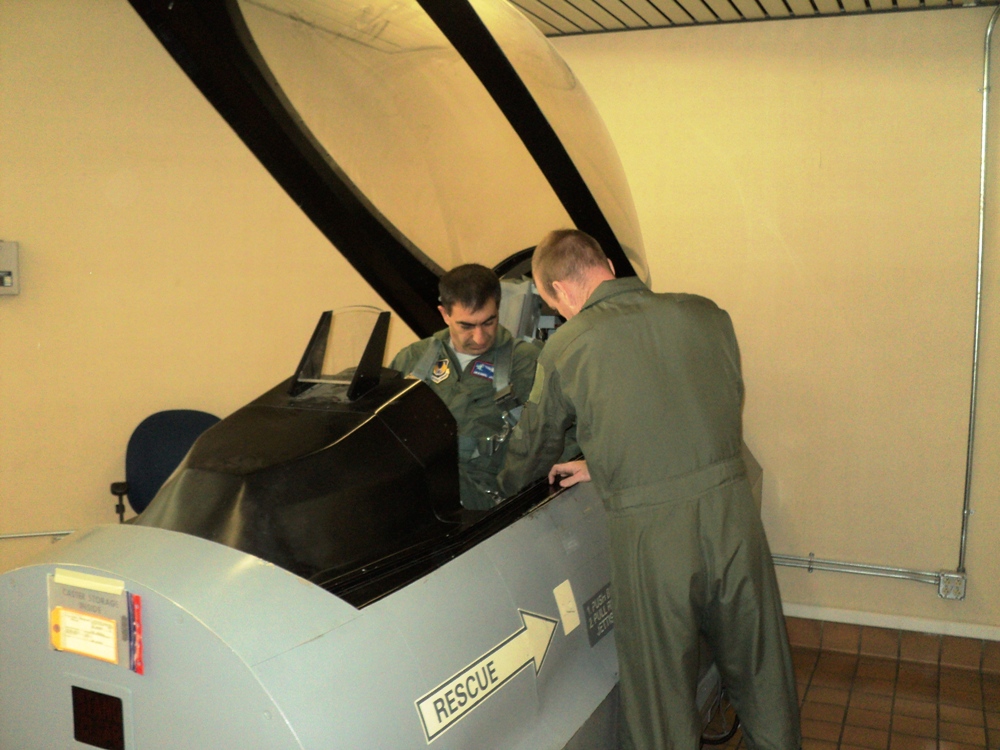 Ingress and egress training into a simulated cockpit gave me an appreciation for confined space aboard a high-performance aircraft. I learned the location of the important controls – the 100 percent oxygen switch and the ejection handle. I practiced climbing in and out in my bulky boots.
Ingress and egress training into a simulated cockpit gave me an appreciation for confined space aboard a high-performance aircraft. I learned the location of the important controls – the 100 percent oxygen switch and the ejection handle. I practiced climbing in and out in my bulky boots.
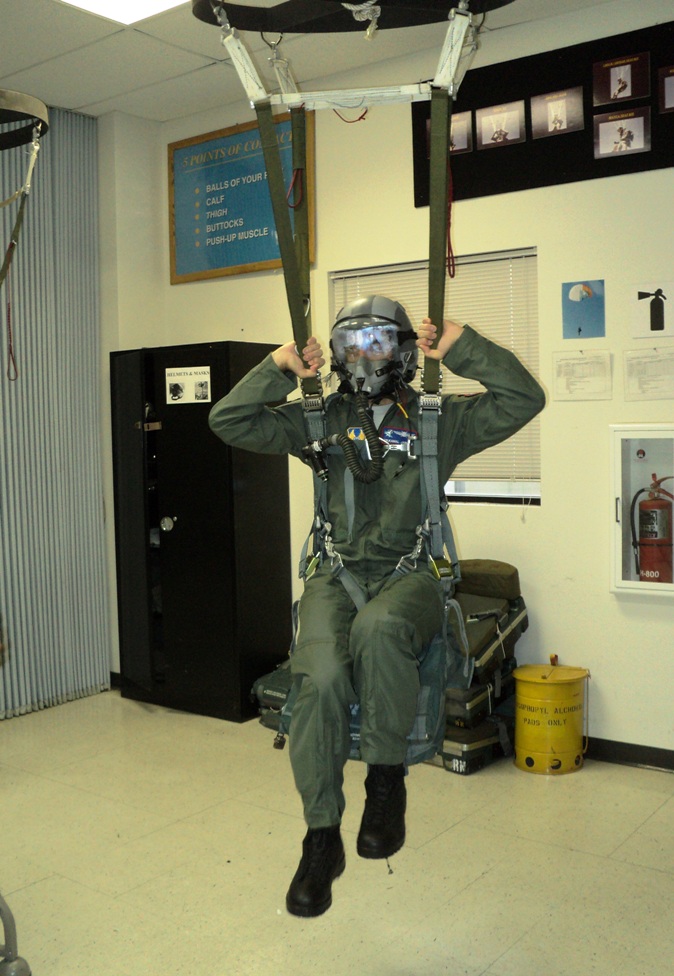 Parachute training followed. I watched a video of an F-16 crash with successful pilot ejection. Then the instructor went through slides explaining that if either the pilot or passenger pull the eject handle, the canopy blows off first, followed by passenger then pilot. The seat ejects me and stays with me in free fall until we reach 15,000 feet, then the seat falls off and the parachute deploys automatically. I am supposed to look up and check parachute integrity, yank any stuck rope, and maneuver to land into the wind.
Parachute training followed. I watched a video of an F-16 crash with successful pilot ejection. Then the instructor went through slides explaining that if either the pilot or passenger pull the eject handle, the canopy blows off first, followed by passenger then pilot. The seat ejects me and stays with me in free fall until we reach 15,000 feet, then the seat falls off and the parachute deploys automatically. I am supposed to look up and check parachute integrity, yank any stuck rope, and maneuver to land into the wind.
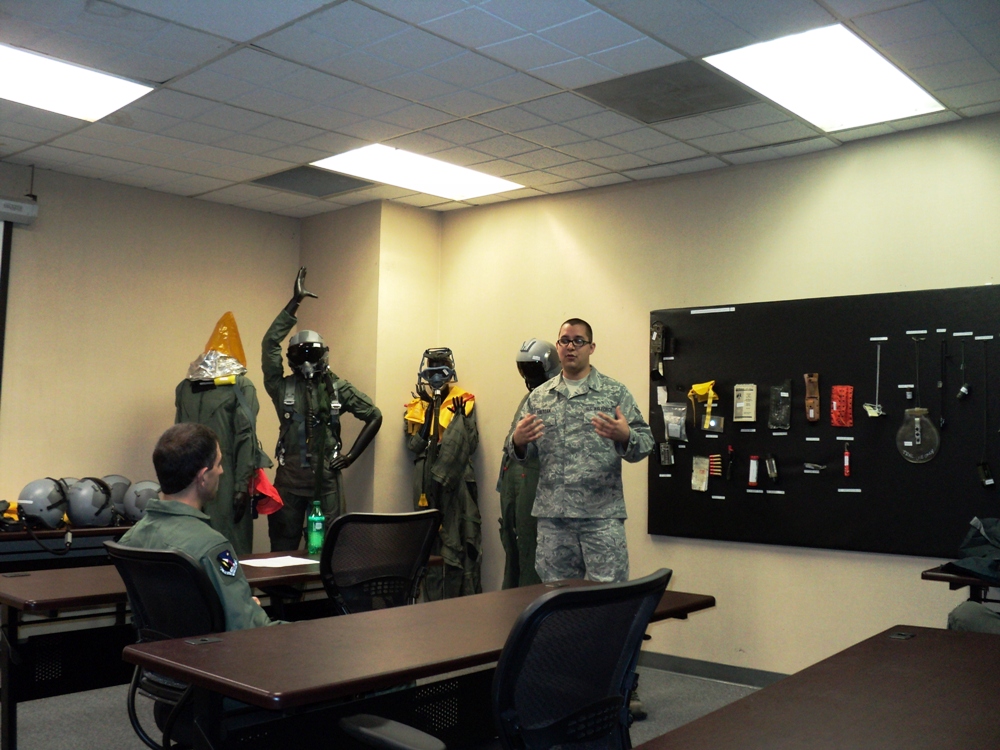 Following the video, I dangled from the ceiling and practiced what I learned. Then I practiced touchdown, falling and rolling.
Following the video, I dangled from the ceiling and practiced what I learned. Then I practiced touchdown, falling and rolling.
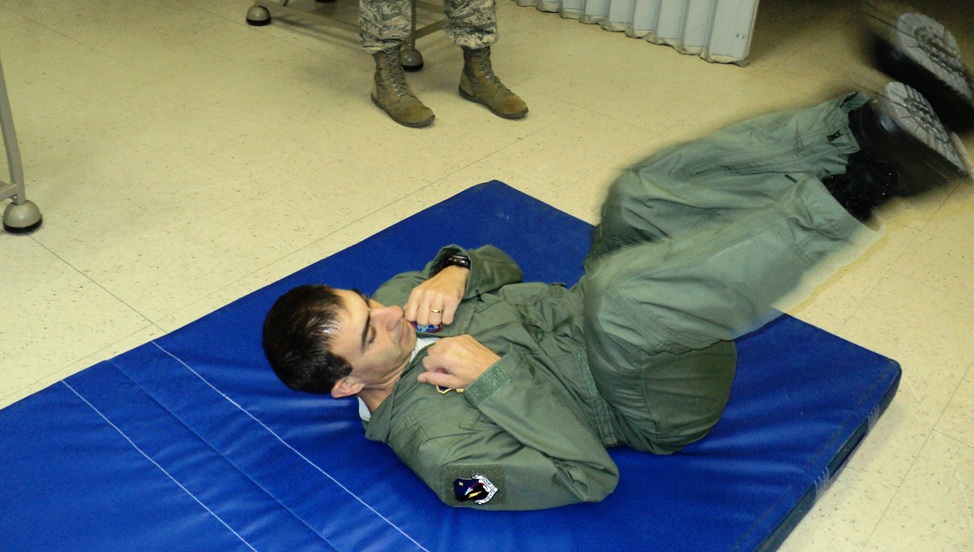 In the event of an ejection, a survival kit drops with me. Survival training focused on explaining the use of all the items in the kit – signal mirror and flares, whistle, die, water and purification tablets, double edged knife, to name a few.
In the event of an ejection, a survival kit drops with me. Survival training focused on explaining the use of all the items in the kit – signal mirror and flares, whistle, die, water and purification tablets, double edged knife, to name a few.
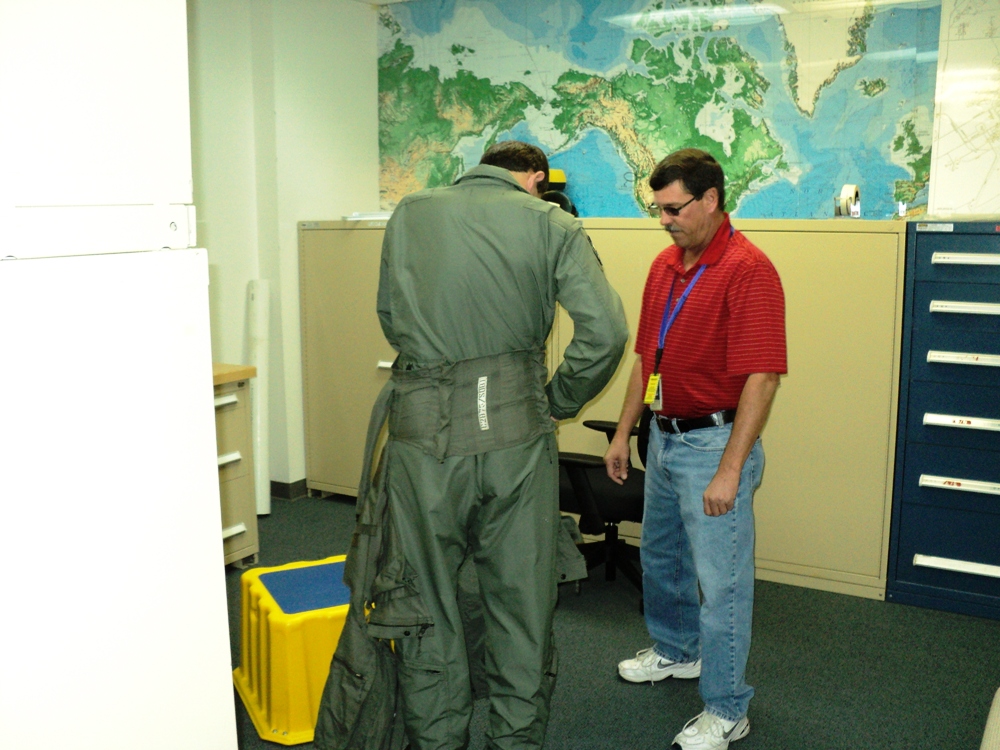 Helmet and face mask fitting brought a first hint of the claustrophobia to come. Harness fitting, also known as the eunuch-maker, required passing two seat belts between the legs and over the shoulders, and pulling them very tightly. Finally, the G-suit reminded me of Victorian corsets as two airmen weaved and tightened strings through my suit around my lower torso and my thighs.
Helmet and face mask fitting brought a first hint of the claustrophobia to come. Harness fitting, also known as the eunuch-maker, required passing two seat belts between the legs and over the shoulders, and pulling them very tightly. Finally, the G-suit reminded me of Victorian corsets as two airmen weaved and tightened strings through my suit around my lower torso and my thighs.
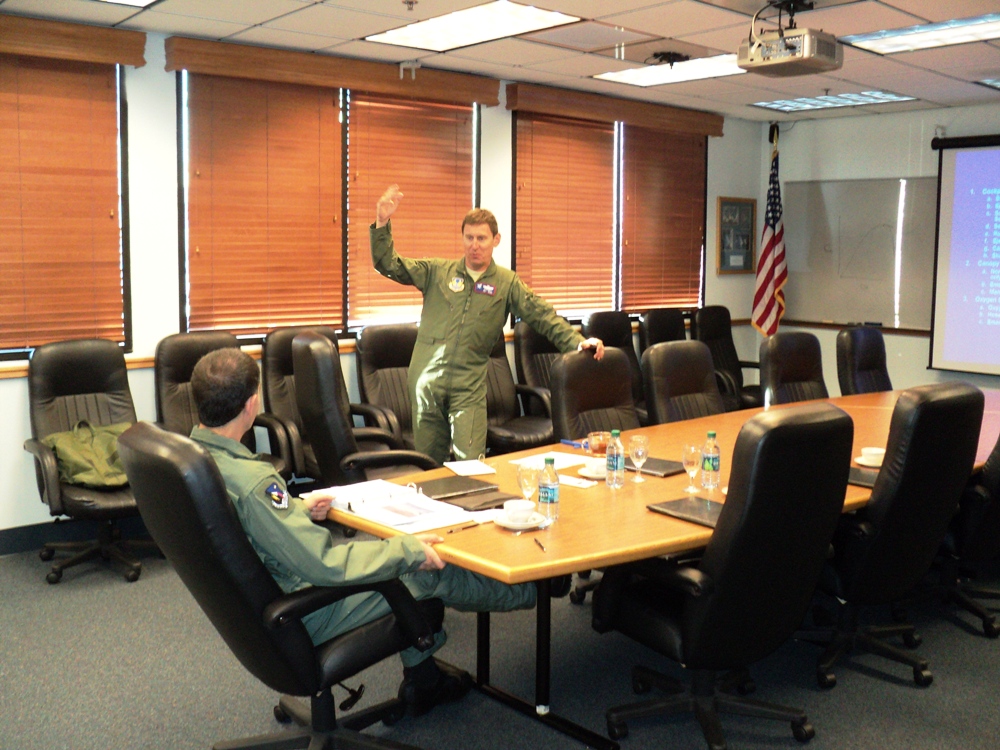 Evil Bill gave me the pre-flight brief. We would fly a two-seat F-16. A smorgasbord of maneuvers would keep us aloft for over an hour. I felt excitement and apprehension. I packed several emergency barf and pee bags, and marched towards a colorful F-16 with tail number 377.
Evil Bill gave me the pre-flight brief. We would fly a two-seat F-16. A smorgasbord of maneuvers would keep us aloft for over an hour. I felt excitement and apprehension. I packed several emergency barf and pee bags, and marched towards a colorful F-16 with tail number 377.
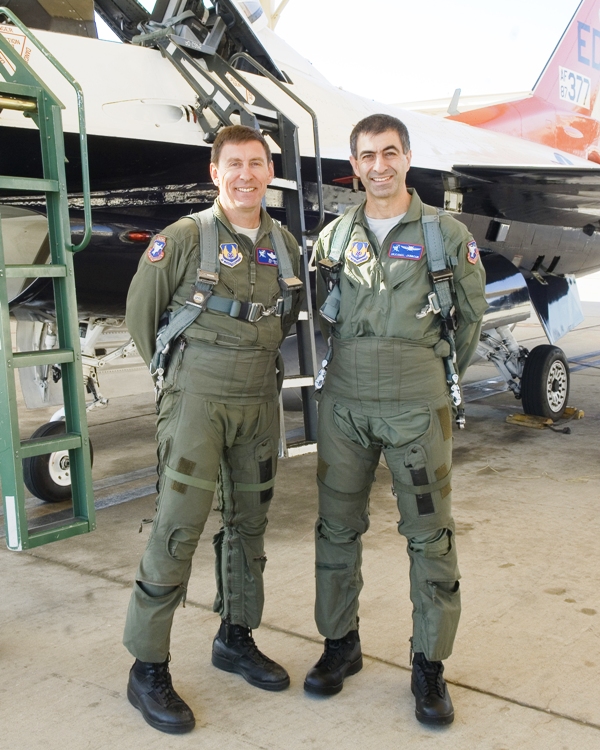 I climbed the ladder, fumbled my way into the rear seat, and proceeded with the pre-flight procedure. I connected my harness to the seat, fastened my seat belt, connected the face mask to the oxygen hose, connected my headset to the intercom cable, and plugged my G-suit into the air hose. I tested the G-suit, the oxygen supply and the intercom. When Bill lowered the canopy, it smashed against my helmet. I shrunk into my seat until I could adjust its height after engine start.
I climbed the ladder, fumbled my way into the rear seat, and proceeded with the pre-flight procedure. I connected my harness to the seat, fastened my seat belt, connected the face mask to the oxygen hose, connected my headset to the intercom cable, and plugged my G-suit into the air hose. I tested the G-suit, the oxygen supply and the intercom. When Bill lowered the canopy, it smashed against my helmet. I shrunk into my seat until I could adjust its height after engine start.
We taxied to end of the runway for a final operational inspection of the plane, and off we went into the wild blue yonder. I started my Timex GPS as we rolled down the runway at full throttle with after burners. We took off into an unrestricted vertical climb. I saw the world behind me as we climbed. In no time, we were upside down and rotating towards level flight.
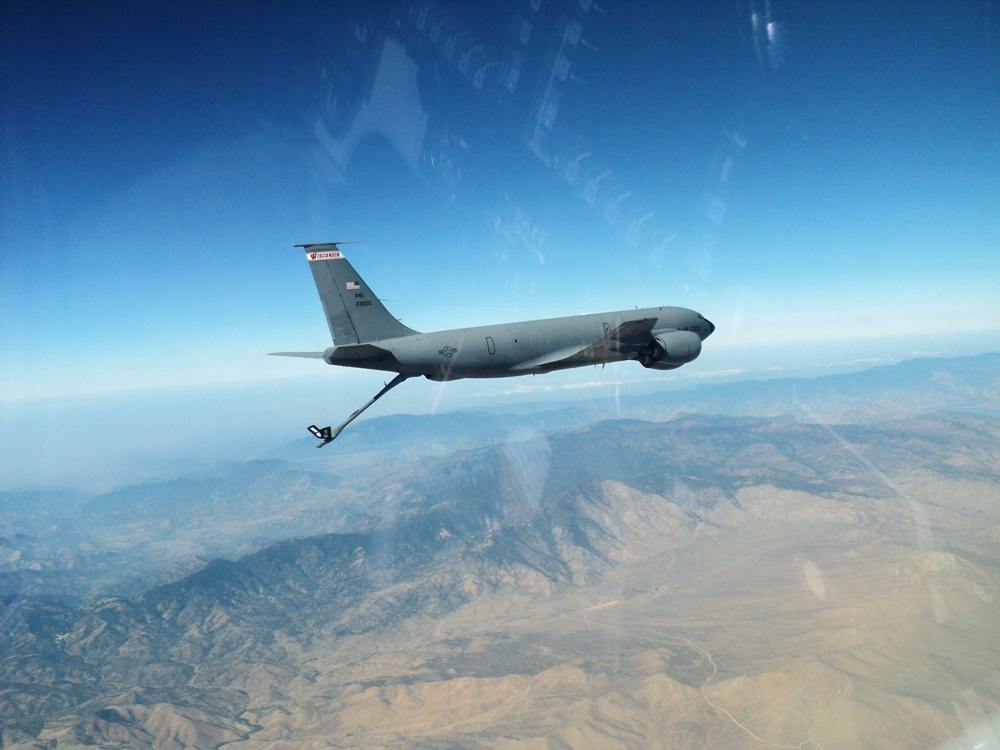 My GPS stopped as soon as we accelerated vertically. Bill claims that commercial GPS chips have a built-in shut-off beyond certain altitude, speed and acceleration thresholds. I turned off the GPS and restarted it. It captured data for 16 minutes of level flight before shutting off again.
My GPS stopped as soon as we accelerated vertically. Bill claims that commercial GPS chips have a built-in shut-off beyond certain altitude, speed and acceleration thresholds. I turned off the GPS and restarted it. It captured data for 16 minutes of level flight before shutting off again.
Bill gave me the controls of the F-16, and I flew it for a short while. I labored in breathing against the pressure of the oxygen supply, and I felt incredibly constrained. Flying an F-16 is a far experience from running on my beloved Highland Forest trails. Word of a KC-135 tanker in our vicinity sent us searching for it.
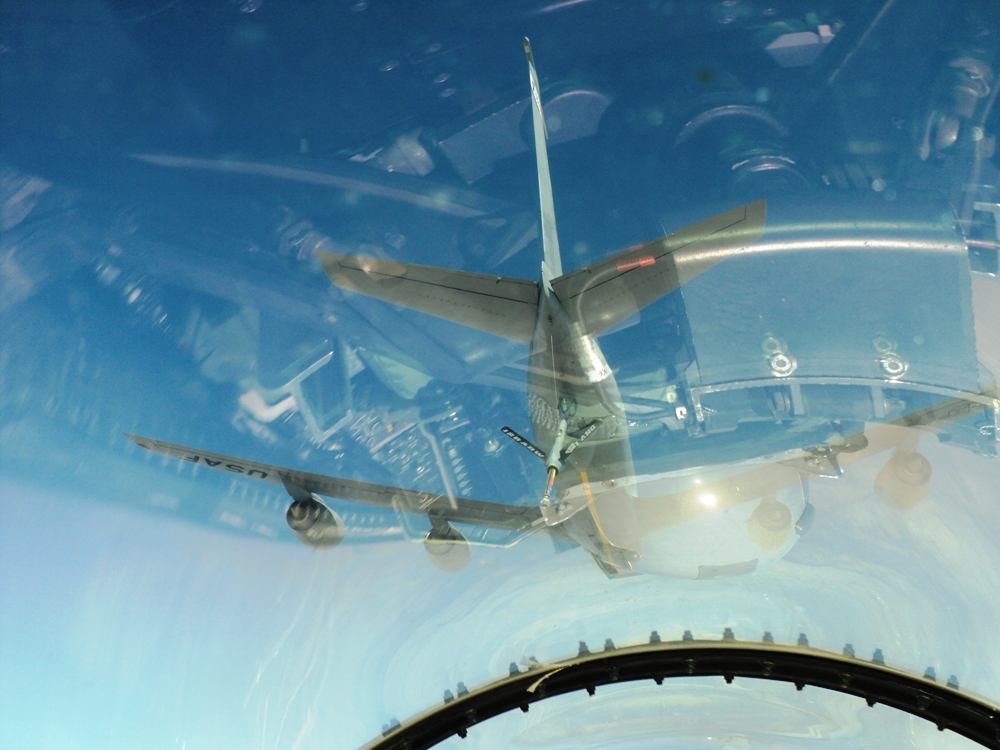 Evil approached the Stratotanker as the operator lowered the boom into the F-16 fuel receptacle. I could have reached out and touched the boom over my head. We repeated this procedure twice, then moved out onto the right wing of the tanker to await two F-22 Raptors.
Evil approached the Stratotanker as the operator lowered the boom into the F-16 fuel receptacle. I could have reached out and touched the boom over my head. We repeated this procedure twice, then moved out onto the right wing of the tanker to await two F-22 Raptors.
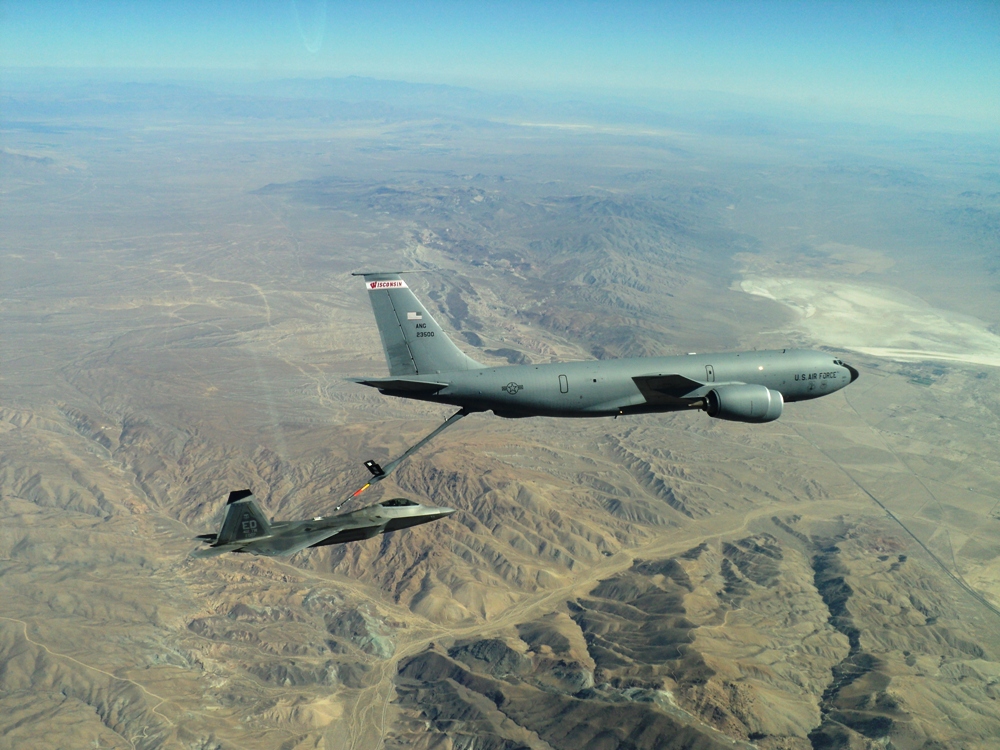 The Raptors dropped from the sky towards the tanker. One of them connected for refueling, while the second flew on our right wing. We flew in a four-ship formation for several minutes, and watched the Raptor disconnect from the tanker to make way for the second Raptor.
The Raptors dropped from the sky towards the tanker. One of them connected for refueling, while the second flew on our right wing. We flew in a four-ship formation for several minutes, and watched the Raptor disconnect from the tanker to make way for the second Raptor.
We bid the Stratotanker farewell, and climbed towards 50,000 feet. Afterburners roaring at 22,000 gallons of fuel per hour and G-suit pumping, we leveled off and broke the sound barrier. We flew supersonic at mach 1.3, and boomed Edwards. I watched the sky get darker and observed the earth curvature, before we descended back towards 30,000 feet. Evil performed some aerobatic maneuvers, rolled the plane in rotisserie mode, and offered me the controls – which I declined.
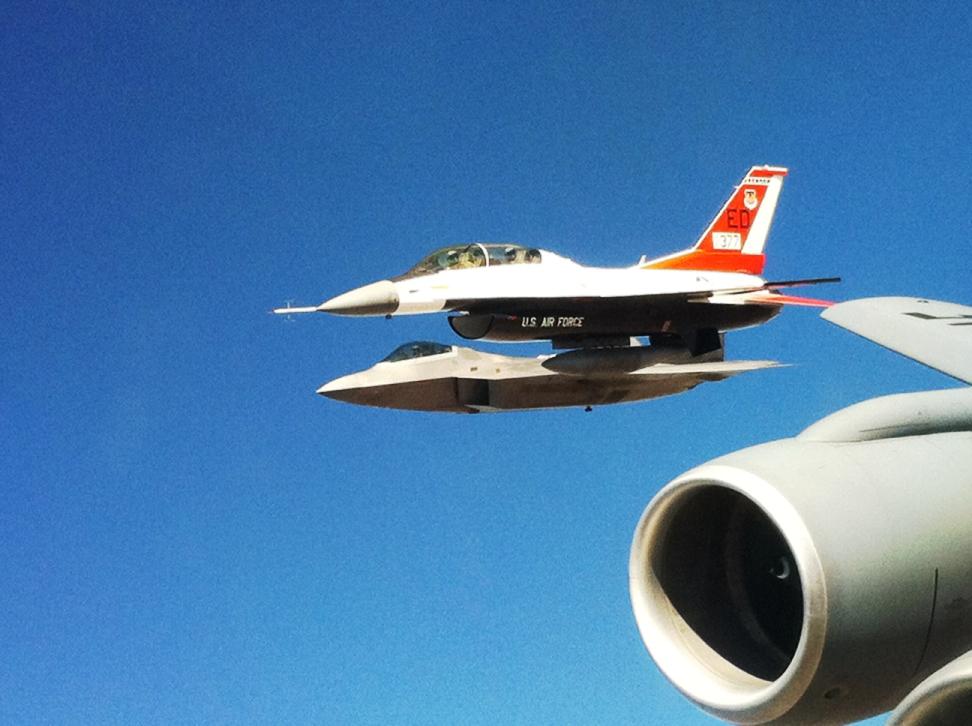 We flew over the expanse of Edwards, and Evil pointed historic landmarks. I felt very tired and claustrophobic, my breathing became laborious, my guts felt compressed unnaturally, and my body announced its discontentment from running a Marathon six days earlier. I told Evil that I was ready to go home.
We flew over the expanse of Edwards, and Evil pointed historic landmarks. I felt very tired and claustrophobic, my breathing became laborious, my guts felt compressed unnaturally, and my body announced its discontentment from running a Marathon six days earlier. I told Evil that I was ready to go home.
The approach and landing were textbook uneventful. Our flight lasted just over an hour. I removed my mask and took a deep breath of clean air. I disconnected from the F-16 and exited the plane. I coined Bill and thanked him for a memorable experience.
Epilogue – the physiological effects of the flight lasted well into the following day. I felt more tired after the flight than I did after a Marathon. I felt sleepy. My stomach had no desire to digest any food. Gases trapped in my body from breathing 100 percent oxygen exited from every available orifice. My ears kept popping for many hours. My sinuses felt funny. All in all, it was indeed an experience of a lifetime.
Dr Kamal Jabbour prefers trail running over F-16 flying. Dr. J's RUNNING Column appears in Cyberspace whenever endorphins call.